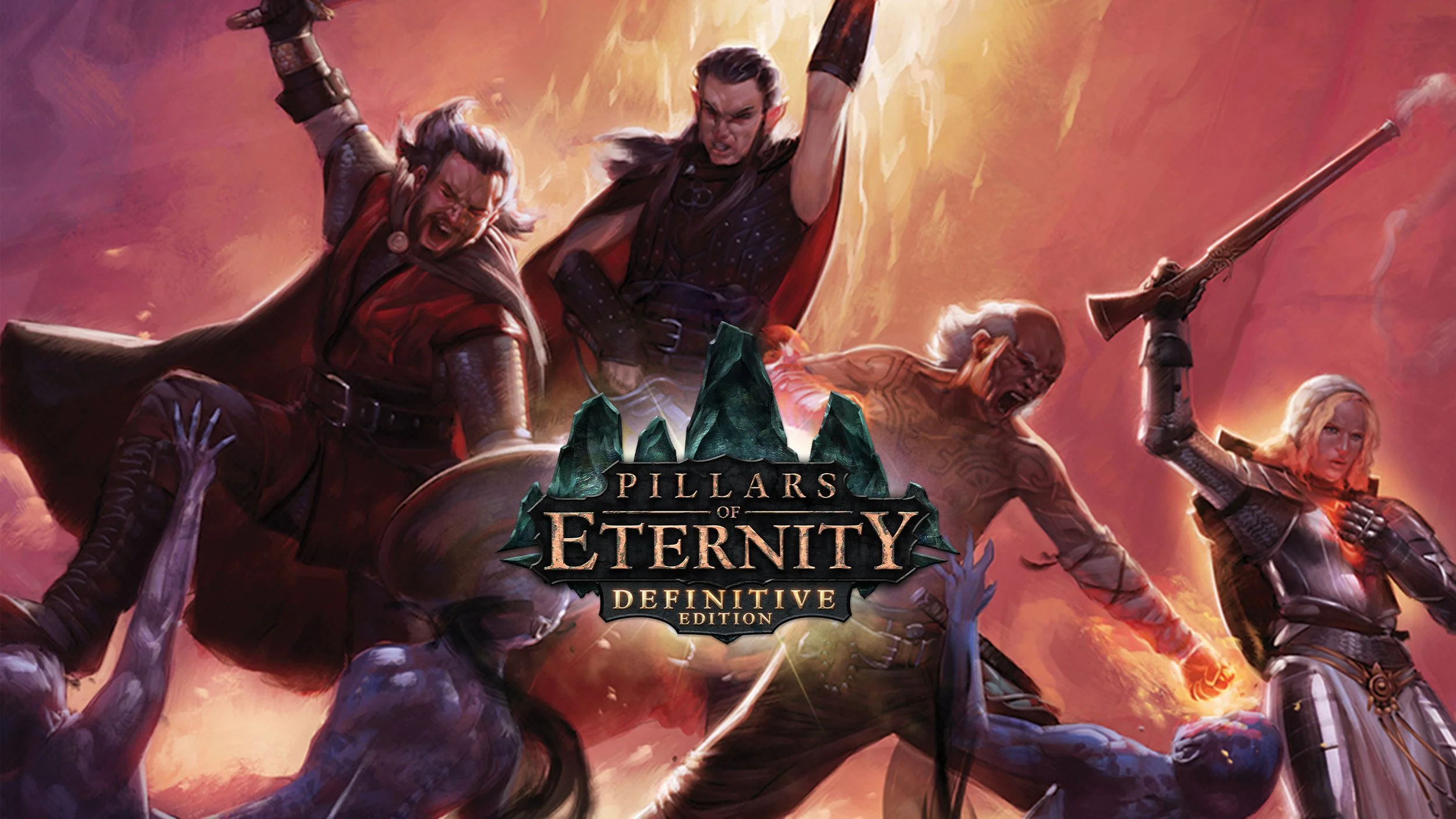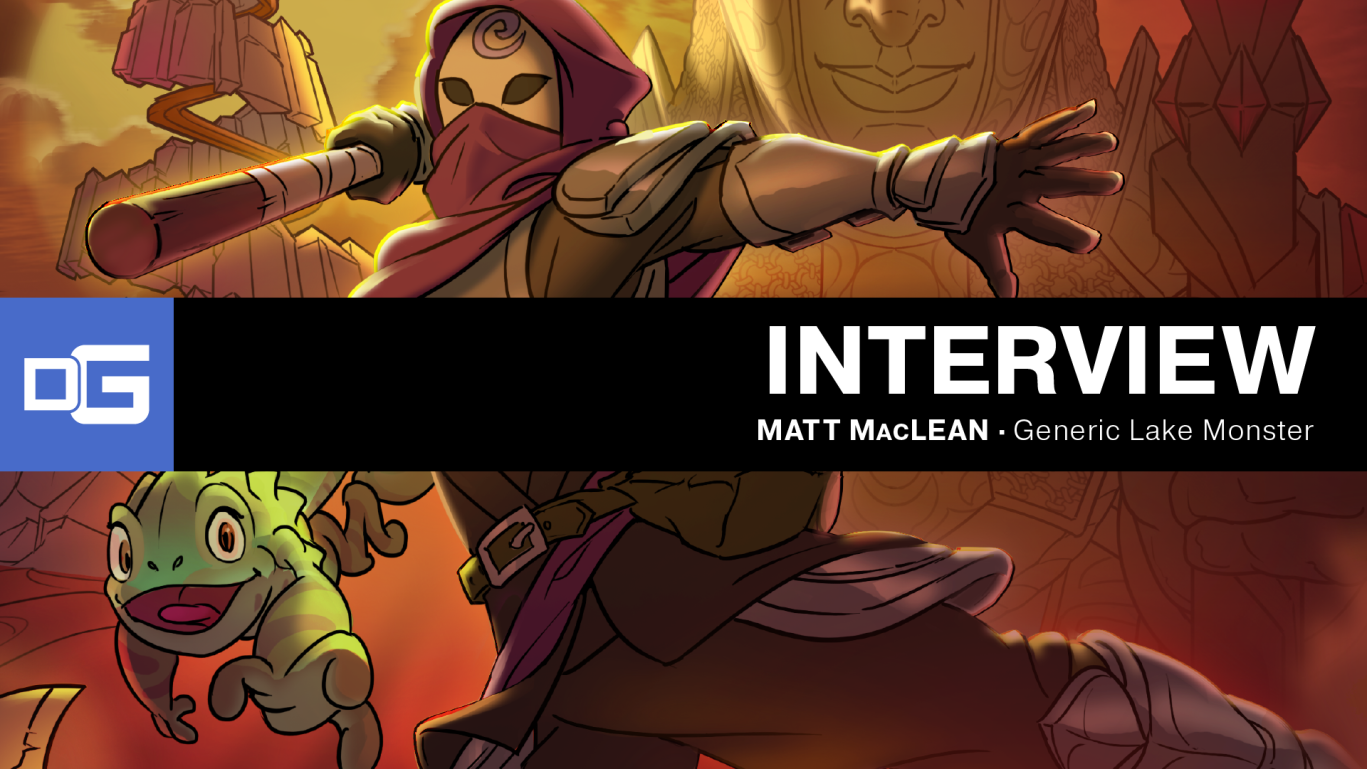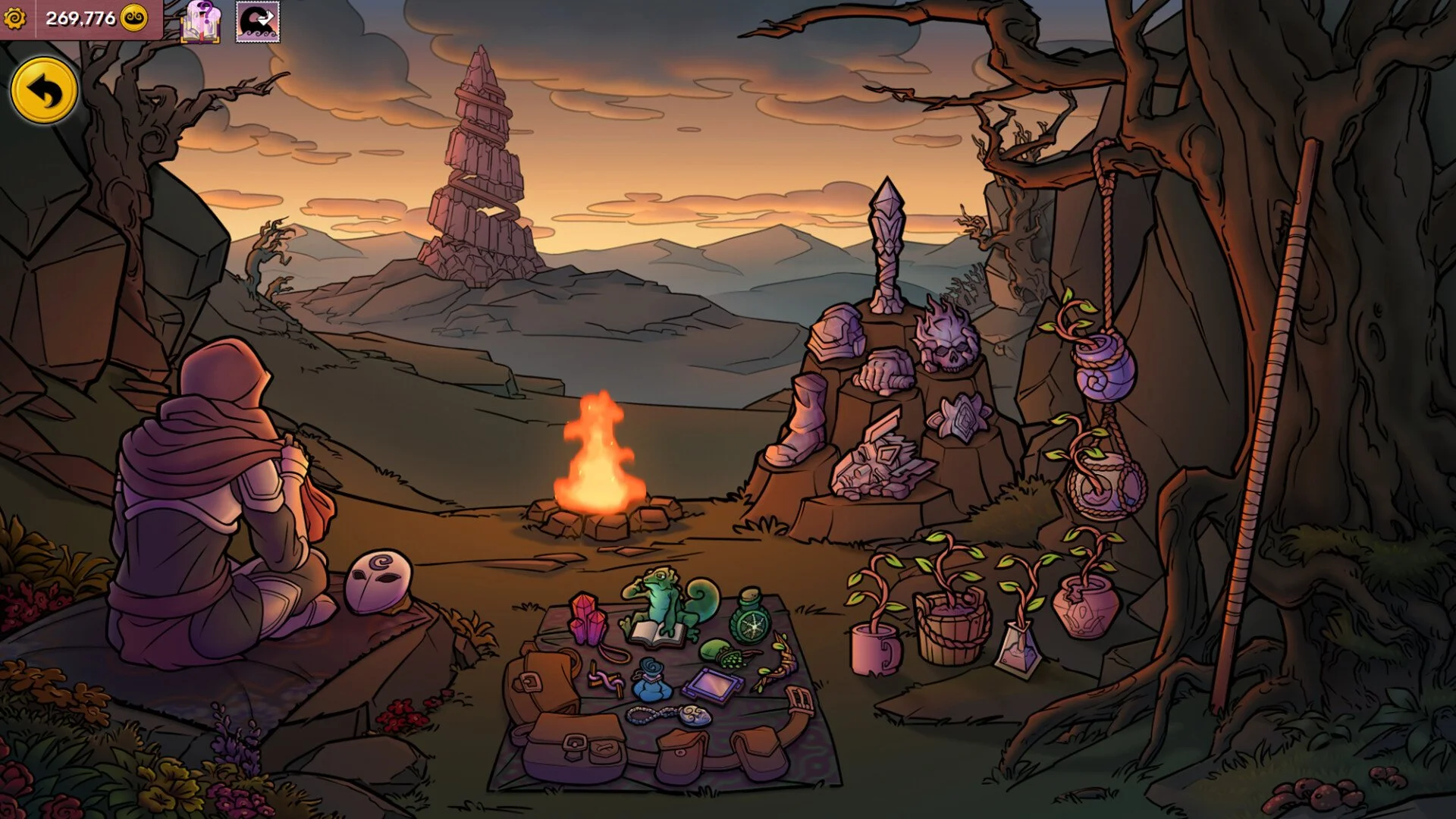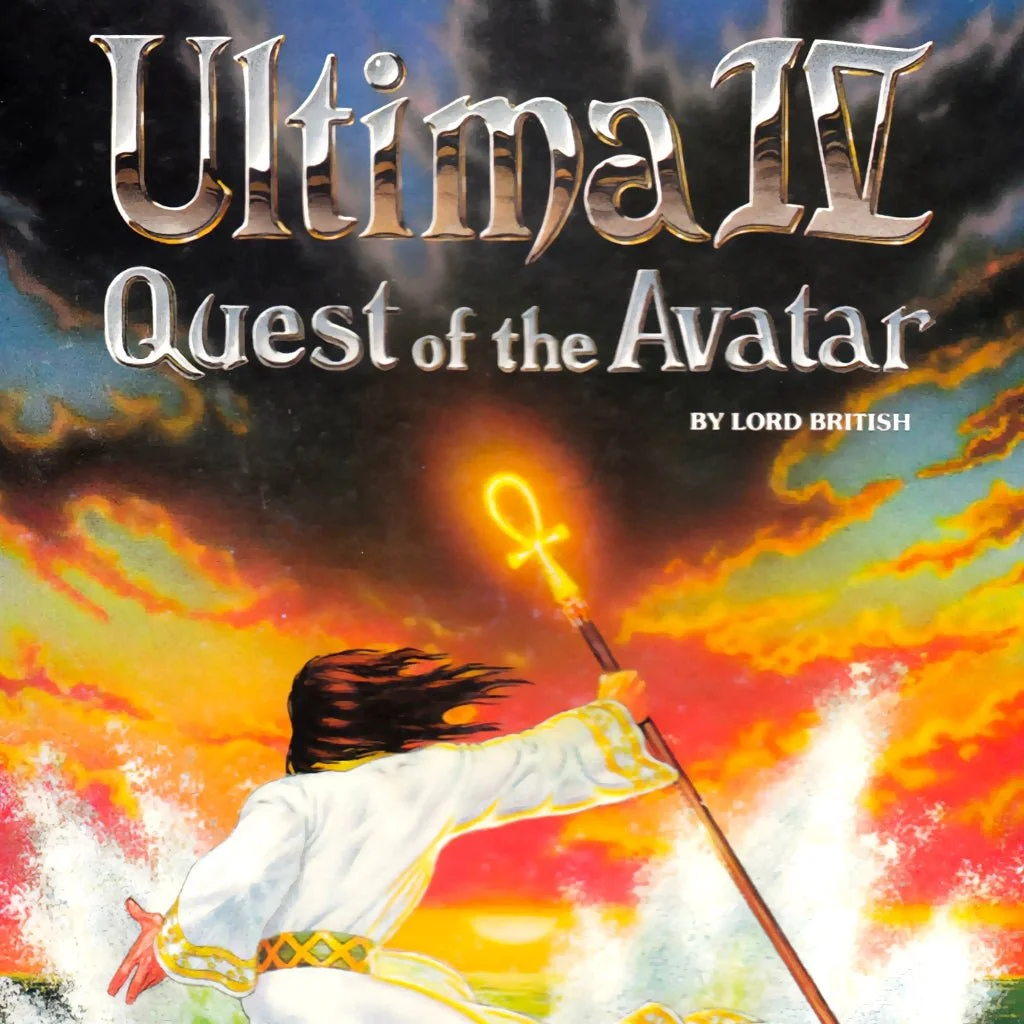Quarterstaff Developer Interview
Accessibility, Good Game Design, and Going Independent
Here at Dear Gamers, we get to work with a lot of indie devs when it comes to what games we have the chance to review. But it’s a DG first to have an indie dev reach out to us because of our accessibility coverage.
Accessibility is something we’ve long talked about, but historically it’s something that gets mentioned within a more general review or article. It’s been one piece of a larger puzzle. That is, until recently – when we started publishing our first dedicated accessibility reviews for Clair Obscur: Expedition 33, Donkey Kong Bananza, and now, Quarterstaff (check out the full review here!).
Accessibility is a conversation that needs to happen more in gaming, and it only grows when we add our voices to it. With that in mind, we reached out to the developer behind Quarterstaff to see if they’d be down to share their experiences working in game dev and why accessibility matters to them.
Lucky for us, they said yes – and shared some incredible insights about their history making games, the things they’ve learned about accessibility and how it relates to good game design, and so much more:
Introduce yourself! How long have you been involved with game development and what first drew you to it?
Hi, I’m Matt MacLean, I’ve been making games in a professional capacity since 2004. My first job was with Worlds Apart (while defunct, the folks from that company went on to form the wildly successful Dire Wolf Digital) working on online trading card games like The Lord of the Rings Online Trading Card Game and Starchamber: The Harbinger Saga.
Most of my career was spent at Obsidian Entertainment, where I had the opportunity to work in a variety of Design roles on games like Neverwinter Nights 2 (and the DLC Mask of the Betrayer), Alpha Protocol, Dungeon Siege 3, Fallout: New Vegas, South Park: The Stick of Truth, Pillars of Eternity, and Tyranny.
What first drew me to gaming was the blessing/curse of having Ultima 4 be the first game I could play all day. Which is more my way of saying I always wanted to work on games but it wasn’t a ‘real job’ people had when I was a kid, so I’m just crazy lucky that I can do something with all those years spent playing low-res games and using my imagination to try to make them even better.
What inspired you to create Generic Lake Monster? How big is the team and how long ago did the studio form?
I understand the business motive behind sticking to known formulas – games are big expensive endeavors and there are finite risks you can take with a big team, so I knew if I wanted to enact my own vision, I’d need to put my money where my mouth is. Since I don’t have children to leave destitute but also won’t live forever, I never really felt fully ready to take the plunge, just eventually hit the point of realizing I’d never feel ready and had just dive into uncertainty.
And at some point in my career, I realized I’m going to feel responsible for everything that goes wrong in the games I work on, so I might as well be the person where the buck stops and who is actually to blame for everything that goes wrong. Why beat yourself up over falsehoods when you can beat yourself up over truths?
The studio’s origins trace back to the end of 2018; I had quit my job at Obsidian earlier that year and was doing the whole ‘learn to program’ adventure and a friend of a friend (now my collaborator James Gary) was a professional programmer and hobbyist game designer willing to teach what he knew, and since I was a professional game designer who was at best a hobbyist programmer, we made a good team.
After doing a simple game jam together, we realized we share a lot of goals, interests, and (most importantly) values regarding game development, so we decided to take the plunge and start making things in earnest.
Once we had made enough things together that I felt we could get something past the finish line, I lit my savings on fire to start hiring a mix of former South Park: Stick of Truth team members, developers in my extended social circles, and eventually some really brilliant college kids that started as interns but were too good not hire.
Tell us about Quarterstaff. For the members of our audience who are new to the game, what’s the elevator pitch and what makes it stand out as a turn-based strategy game?
Quarterstaff is a turn-based fantasy epic that combines strategy without randomness, intense challenge without quick time events, and accessible gameplay that’s as easy to play moment-to-moment as Minesweeper, even if it may take you upwards of a hundred hours to complete ALL the challenges the game has to offer.
That’s the quick pitch. If you want the sincere-yet-too-meandering-for-good-market-copy version of things: Quarterstaff is a martial-and-magical arts action epic intended for players who maybe can’t normally hold a controller and enjoy action epics. It’s an RPG minus all the things that make you want to restart an RPG several hours into it (such as oops I picked a class that sucks, or oops I missed some chest in a prior level and can’t go back, or just having random number generators turn hours of gaming into zero forward progress). And while it’s a game about conflict and fighting, it’s not a game about carnage; nobody dies, and while we imply that charging rent or killing for a living is a shitty job and might offend landlords and warlords, we’re not another addition into the pantheon of games about kill counts and blood splatter.
My alt elevator pitch is: Elaborately Bespoke Chess Grotesque… but if you have to send people to the internet looking up your marketing pitch and having them get disappointed by the lack of horror and/or monster dating when they learn about my particular use of the word Grotesque, it’s probably not good marketing copy. I know how to make games, if I had a talent for marketing games Quarterstaff might have been a rapid enough success for us to secure the rights to Half Sword as our sequel title before that game became a thing. But just to put this out there in case anyone on the Half Sword Games team is reading this, we owe the world a medieval weapons pun-based Steam discount bundle – let’s talk.
Since the October launch, reviews for Quarterstaff on Steam have been highly positive. What’s that experience been like? You took a big swing to go all-in on indie development – how has the game’s reception felt in the wake of that?
Nobody wants their game to be poorly received, so while I’d like to tell you Alpha Protocol taught me to not take review scores personally and find satisfaction in your work independent of ratings and reception, the truth is it’s been very affirming to hear positive feedback from paying customers.
The reception has included both folks who enjoy the ‘play it in the background’ quality of the game as well as folks who enjoy the optional challenges – it was important to me that the game be challenging, but not by using tools like removing progress or removing the pause button to force your full attention.
“Just because Quarterstaff is intended to be accessible and easy to play doesn’t mean it’s easy.”
We put an in-game feedback widget in the game that lets players give us feedback with total anonymity, and it’s been fantastic to get a lot of “this didn’t make sense at first but know I understand it” feedback that came in during Early Access and the final version of the game is a better game because of those anonymous heroes willing to puzzle through our game’s moments of minimal clarity and then put into words how we could have done it better. And we had at least one player that claims to have sunk 1,600 hours into our game and wants a randomized version of the game (you and me both, my beloved #1 fan) and I’m now wishing I had included a checkbox that says, “May we find you and quote you for marketing purposes?”
If only because I’d love to make a marketing trailer that includes a wall of dozens of quotes, narrated in a chorus of voices, all of them complaining about the Bandit Alchemist. Just because Quarterstaff is intended to be accessible and easy to play doesn’t mean it’s easy.
When you first reached out to us, you mentioned a passion for accessible game design. Can you tell us about what sparked that passion for you and why you prioritize accessibility?
I’m colorblind, and have always had a very narrow, specific grasp of accessibility, but as someone otherwise able to play nearly any game short of Doctor Mario or Puzzle Fighter, it took me a long career of seeing this subtle difference between creating fun friction and unnecessary toil.
It probably started oddly enough with Dark Souls. After completing the first Dark Souls, I tried to convince my friend to play it, then watched him enjoy it immensely for several hours only to get increasingly furious (to the point of abandoning the game) about how the game wasn’t responding to button presses. He was along for the ride, willing to learn the rules of the games and execute on those rules, but he was fighting with the interface of the game itself and what was potentially a punishing-but-rewarding experience left him feeling like his time had been wasted.
And no, it wasn’t a ‘getgud’ issue, I watch people play games for a living and could see him letting a monster hit him so he could master the riposte timing, and lots of other folks report experiencing input lag – he wasn’t failing as a player, the game was failing him.
You can look at this as a case study in how a single bug can turn a player from totally engaged to totally soured on a game, and you can talk about expectations and violating the player’s trust in patterns and all that stuff is valid, but there’s also a very basic lesson in accessibility here – there will always be people who are down for the fantasy your game is offering, and would put up with a lot of setbacks that the rules of the game might inflict, but because they’re going to lose forward progress due to losing battles with the game’s interface, there’s now a deal-breaking pain point in your game and they won’t risk their time with your game at all.
I’m not smart enough to say it all clicked then and there, but after a few years of successes and failures, it did help make clear that a lot of really good decisions for overall gameplay happened to be good accessibility decisions… though I can’t pretend accessibility was the initial motivation.
We wanted to have our cake and eat it too on Tyranny – we wanted a lot of choice and reactivity, but we also wanted to localize the game into a bunch of languages so there had to be word limits. I’m lazy and hate exposition, and while I was happy to describe a person or a place, I wanted to side-step doing it more than once. So I worked with the geniuses in the programming department to get a system of expanded descriptions that a player sees by hovering over the keywords.
“…after a few years of successes and failures, it did help make clear that a lot of really good decisions for overall gameplay happened to be good accessibility decisions…”
The motivation was sloth, but what came out of it was an accessibility win. Our game was throwing a lot of proper nouns at the player fast and by some standards, furiously, and even if you’ve got exceptional reading comprehension skills, you might not read at your best when you’re trying to comprehend so many other moving parts of a game, so this was, in essence, a cognitive accessibility win that helped new players learning the ropes, returning players shaking off the cobwebs, and just anybody who isn’t a proofreader with work-life balance issues.
And then there was this time I was totally wrong about something on Tyranny. One day the project director told me the next build is going to append a little reputation change preview to the end of every line of branching dialogue. I initially had some rant about having to preserve the notion that we are rewarding those who pay attention to what is said and unsaid and… whatever, I was wrong, because this was an OPTIONAL feature and it made the game better.
It only takes one or two moments of clicking on a line of dialogue that seems like the insightful, clever, or otherwise ‘best’ response and getting a negative outcome before you as the player start to feel like there’s perhaps no reward for paying attention – even if the best answers fit your predictions most of the time, a lot of players remember the off-beats disproportionately.
If you feel decision paralysis over branching dialogue, that’s a pain point, and not saying games should never surprise you a little, but if you have the capacity to optionally turn off that headache-for-some, why not?
And here, this accessibility decision that was an affordance to folks intimidated by the reputation system turned out to make the game better. One of my favorite moments in the game got better because of this feature! As the roaming deputy of a powerful overlord, you are watching someone commit summary execution of a prisoner, and you can just be silent and let them do their thing or you can use your “I work for this immortal manifestation of Justice, and this is actually my decision to make” card.
I had more than one coworker point out that they initially thought the conversation moment was a no-brainer decision – OF COURSE they should say something, why not? But once they knew in advance that staying silent really does preserve your reputation and isn’t just opting out of the conversation early, they reported the moment giving them pause in a slightly chilling way (Why do I care that jerks think highly of me?).
The pattern being: lots of the design decisions that were long-term best for the games I worked on were accessibility improvements (even if we arrived from them without that notion in our heads at first) so maybe if there’s this common thread running through these good decisions, it’s something to take seriously.
By the time I quit my job to start my own endeavors, I think all the coworkers dealing with carpel tunnel or other motor control limitations stayed with me – we’re all eventually going to be disabled gamers someday, unless of course we skip directly to dead gamer. So while I’m proud of the not-very accessible games I worked on, I wanted the next game(s) I work on to be playable by as many people as possible.
“So while I’m proud of the not-very accessible games I worked on, I wanted the next game(s) I work on to be playable by as many people as possible.”
And lest I sound too virtuous about it, there’s a business logic to this as well. As an indie company, I know we can’t compete with making the most intense rollercoaster in the theme park, so if I’m trying to sell tickets to pay the bills and maybe make more rides, I can try to make a ride with one of those “You must be this tall to ride” barriers of entry and hope that I find some players who still have time (let alone money) left over from all the other (more intense) rollercoasters. Or I can try to make a really fun ride that maybe doesn’t try to compete with G-forces and is instead trying to impress you in other ways that don’t require limitations on who can buy a ticket.
How do you feel about the perception of accessibility nowadays, on both the dev and the player side? Do you feel it’s moving in a positive direction? Do you deal with any misconceptions about it (i.e. “easy mode” type discourse)?
I think most developers are of the opinion that accessibility is ‘great if we can afford it’ – as in, if someone else was paying to put a screen reader in their game, but it’s so hard to make games as it is that it probably feels like a luxury convenience for most. But with that aside, nobody I know in the professional game development sphere is against breaking down barriers to finding new players.
I do wish difficulty modes weren’t the first thing that came to mind when it comes to accessibility, as it’s certainly a tool in the toolkit but because there’s so much pride in difficulty settings (notice how many games don’t have an ‘easy’ mode they just have a normal mode because some folks don’t want to be told they’re being infantilized) and that certainly drove some of Quarterstaff’s development – namely, I wanted to make something that was moment-to-moment so easy that it has Undo button, but still very challenging to master so that players aren’t left with the impression of: “this developer thinks accessibility just means easy modes.” The hope is more along the lines they leave the game thinking: “this developer made an accessible game that’s easy enough to see the ending yet incredibly hard to master, but even gamers with a ton of motor control challenges can earn the most difficult achievements.” I’m sure there are some disabled gamers who want very easy games, but the ones I spoke to in the testing of Quarterstaff all want challenging gameplay, they just don’t want the act of understanding and interfacing with the game to be the most difficult obstacles.
As for the player perception of accessibility, there is certainly some section of players that see accessibility as easy mode switches and I can understand how some players feel like games in general are too easy (we wouldn’t have the term ‘Souls-like’ if there weren’t gamers seeking out greater and greater challenges) but the response shouldn’t be raging over Accessibility OPTIONS. But if folks are mad that their games are becoming too large a tent, then uh… cry more? There are currently more inaccessible, hard-to-play games than you can play in one lifetime; we don’t need more.
Switching gears a bit, what games inspire you as a developer? Are there certain games that sparked your love of gaming, or any general genres that you love (SRPG or otherwise)?
The first game I really got to sink my teeth into (Ultima 4) may have primitive graphics by today’s standards but the gameplay loop has yet to be equaled or exceeded by anything in the past forty years, so that certainly inspires me. And Planescape: Torment is the game that showed me what can be done with a narrative in games and that convinced me to quit my journey to law school and eventually end up working with some of the devs who made it to learn from the best.
At some point in my career of making games by day and playing games by night I hit a ‘been there, done that’ feeling with most games, and most games I play these days feel like rehashes and reconfigurations of prior games, so seeing Baba Is You showcased at GDC’s Experimental Gameplay Workshop blew my mind and, for better or worse, made me feel like my esoteric gameplay ideas might appeal to somebody.
Some of my most meaningful and durable inspirations have come not from games themselves but from reading up on player psychology. Mihaly Csdikszentimihalyi’s work on flow states feels like essential research for anyone who wants to make good gameplay and not just merely vomit their own preferences onto a player. Nicholas Nassim Taleb’s Black Swan wasn’t necessarily about game development but helped me get inside all the ways how the perception of randomness and a system’s actual randomness can differ. And Renata Salecl’s Tyranny of Choice did a wonderful job of silencing the part of my brain that was quite vocal earlier in my career that thought more is always better.
On a related note, do you have any games that you think have gotten accessibility really right (either across the board or even just in one or two key aspects)?
Diablo 4’s screen reader is an impressive and praiseworthy feature and my current gold standard of going the extra mile to bring more players into their tent. I’ve met a totally blind gamer who can enjoy Diablo 4 on account of the hard work they put into making a system that narrates what’s on the screen. Having grappled with implementing such a feature, I can tell you it’s easy enough to get a system that narrates what’s under your mouse cursor working, but a system that can handle dozens of reportable events at once and can always prioritize which line is most salient to the player – that’s not something most any team will have the spare bandwidth to tackle. But I have immense respect for Blizzard using their big bucks to serve an under-serviced audience.
For a fun one, do you have any current personal GOTY frontrunners? (Either 2025 games or anything you’ve been playing from the backlog!)
My Game of Year is Cobalt Core, if you’re insisting on games released this year the verdict is still out, but the game I’ve enjoyed the most in the year 2025 is Cobalt Core.
I’m still slowly making my way through Pâquerrete Down the Bunburrow, which I don’t think I will be able to ever fully solve but I’ve enjoyed having peeled back the game to find crazier puzzles each time I come back to it.
Before we wrap up, I want to ask: what’s next for Generic Lake Monster after Quarterstaff? Are you still in the phase of post-launch support? Do you have any ideas for what you may want to work on next?
That’s a tough question to answer as I want to avoid being that CEO who keeps telling you miraculous self-driving tech is just a financial quarter away, but there are plans for more, we just haven’t had instant, viral success that lets us jump into the next project without some serious questions of scope and dev time.
One final question: If you could give one piece of advice to the other indie developers in our audience, what would it be and why?
The player base has subconsciously absorbed some very high standards for games, and while most players will look generously toward indie games, you have to embrace that you can’t do everything, but you’ll also want to set certain list of ‘good enough’ feature hurdles for yourself.
Unless you’ve got a publisher (in which case, are you indie?), the reality of money should help narrow down a lot of decisions. Almost nobody will expect your shooter game to be playable with a Rockband guitar controller, but if whatever controls you do offer can’t be remapped, that’s going to be something people will expect. Maybe at least an option to invert Y-axis toggle on stick controls if nothing else?
What’s ‘good enough’ is different for every genre, but there’s a lot to do on even a simple game, and I think a lot of the trick involves finding what your unique and amazing team can do well and cost-effectively.
For Quarterstaff, I knew the most cost effective answer was to have a game that didn’t animate at all, but I knew I wanted to put money into some sort of animation – a totally static game just wasn’t in our ‘good enough’ criteria (whereas a voice-over for the characters would have been great (and certainly would have happened if my pockets had been deeper), but knew our game could be ‘good enough’ without it).
Given the number of animations in the game, a 3D approach would maybe have cost less than it probably would have for most games, but the fact that our team included Dennis Wright and Andre Nguyen (two animators I worked with on South Park: The Stick of Truth) meant a lot less time spent iterating. As a team, we already knew how to ‘talk 2D’ and they already knew each other’s workflows and idiosyncrasies, so even though I had a big list of animations for them to chew through (the hero alone has 300+ animations), they could hit the ground running and we’d spend a trivial amount of time determining our standards and process.
So I guess my advice is to generally aim low (that may sound depressing but over-scoping is the road to ruination) but look at what you can do at the intersection of quality and quantity and lean into that.
And lastly, if you need a good guiding philosophical question when you don’t know which way to go in life or in game development, I recommend asking yourself WWXNJRD? (What would Xalavier Nelson Jr. Do?)



















